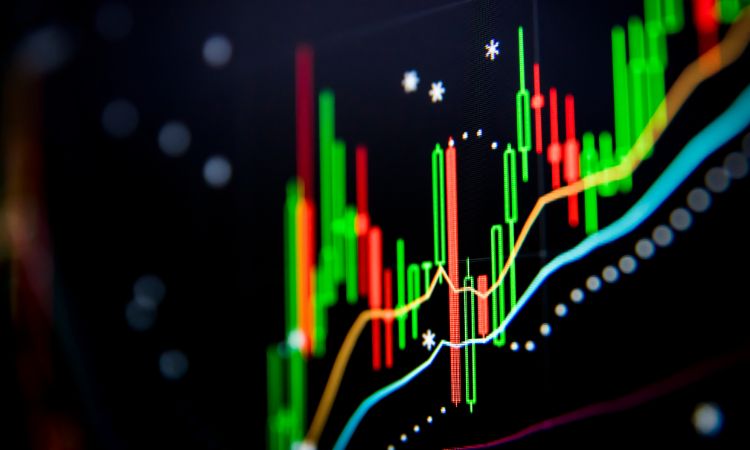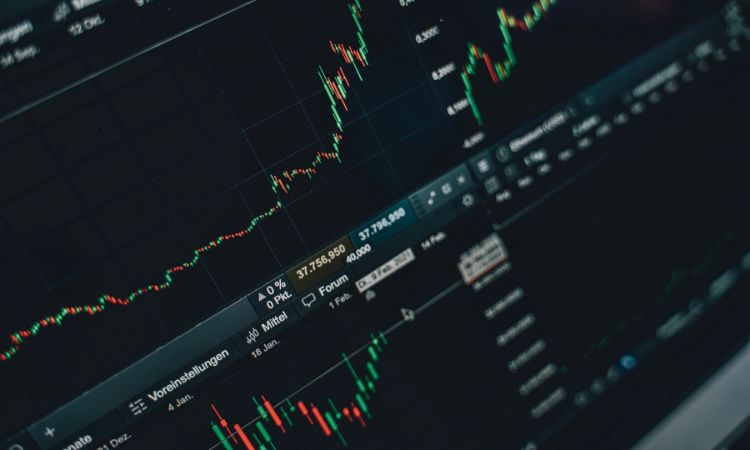Is Quantitative Trading the Future? The Rise of Quantitative Trade

In recent years, the use of a quantitative trading strategy has increased in popularity as a means to help traders make informed, proof decisions. That’s why many people think it is the future, but is quantitative trading the future?
To answer this, let’s understand the quantitative trading first.
In this kind of trading, huge amounts of market data are sifted through using complex algorithms and predictive analytics to find good opportunities. This method has the potential to increase a trader’s profits compared to more traditional, hands-on approaches.
Quantitative trading has been around for a while, but technological advances and data explosions in the 2000s made it popular. In the early days of quantitative trading, most major banks and investment firms could afford computing capacity and data.
Trading strategies can increase profitability. They are considered to be cutting-edge methods in quantitative trading. Quantitative trading eliminates manual analysis and decision-making by using algorithms and powerful computers.
This has increased interest in this sort of trading, with many traders suggesting it might represent the future of financial markets. So what is quantitative trading, and is it the future?
This blog post will answer these questions and explain why quantitative trading may be the future for traders.
Basic Components of Quantitative Trading
Quantitative trading focuses on both price and volume and uses statistical, algorithmic, and high-frequency trading methods to generate profit.
Quantitative traders develop their trading techniques with the help of quantitative instruments like oscillators and moving averages.
Quantitative traders employ modern technologies, statistics, and access to large databases to reach informed trading decisions.
There are four main components to a quantitative trading system:
Plan Detection – Choosing how often to trade, profiting on opportunities, and developing a winning strategy
Strategy Backtesting – Collecting Data, Analyzing Results, and Dismissing Biases
Execution System: Connecting to a brokerage, automating the trading process, and reducing the amount of fees incurred in each trade
Risk Management – Optimal financing allocation, and able to trade psychology
Quantitative Trading Examples
In recent years, quantitative trading’s popularity has increased as it has given investors a new tool for making knowledgeable trades based on research.
Analytical tools, machine learning algorithms, AI, and NLP, are all examples of what is known as “quantitative trading” (NLP).
Examples of quantitative trading strategies that have been successful include progress investing strategies such as return volatility and market manipulation.
Pair trading methods are another illustration. These strategies aim to profit from price differences between securities by shorting one stock and buying another.
In terms of quantitative trading, this is a rather simple case. To optimize earnings, investors typically employ some criteria in selecting a diverse portfolio of companies, including technical analysis, value stocks, and fundamental analysis.
Such settings allow a trading robot to profit automatically from fluctuations in the market.
Related: About Technical Traders
The current quantitative trading landscape
Quantitative trading has unquestionably transformed the financial industry. Traders who use sophisticated algorithms to guide their trading decisions have consistently succeeded in several markets.
Although the future of trading may belong in quantitative analysis, this is still a matter of intense discussion. Some people think it’s the industry’s future, while others dismiss it as a passing trend.
Indeed, quantitative trading is here to stay. Whether or if it becomes the most powerful economic force is uncertain.
Related: INVESTORS/TRADERS: WAKE UP
Is quantitative trading the future?
The future of quantitative trading looks very promising as it is becoming increasingly popular among people in business, stockholders, banking institutions, and hedge funds.
As quantitative capabilities have improved, traders can evaluate more comprehensive data sets and make more precise decisions.
Moreover, automated systems for quantitative trading are being developed using AI-based solutions, which can assist in mitigating the risk inherent in trading on one’s own.
The ability to engage in quantitative trading has increased technological progress. The use of robotics and artificial intelligence (AI) in quantitative trading is the future. A higher degree of accuracy in forecasting and trading may result from this.
In addition, quantitative trading will largely depend on big data and machine learning. So we can say that quantitative trading the future.
What steps are necessary for quant trading?
Creating a quantitative trading strategy requires the following steps:
- In the first place, you must think of an idea or plan. Mean-reversion, momentum, trend-following, or day trading are all viable options.
- As soon as you have an idea, you need to be able to sketch out the details of the design in minute detail.
- You must include your automated trading approach in your existing quantitative trading techniques. Does it improve upon and diversify the current approaches?
- Once the strategy has been evaluated using the out-of-sample test and the diversification criteria, it is added to the portfolio and any relevant software (such as Amibroker).
- After you’ve finished the first four steps, you may put the approach into your program and let it run peacefully.
Algorithmic vs quantitative trading
There has been much debate over quantitative vs. algorithmic trading for many years. Both offer benefits and drawbacks, so which one is preferable?
Algorithmic trading:
- In algorithmic trading, computers employ established rules to perform trades independently. Both short-term and long-term deals can benefit from this method.
- Trading algorithms may make choices in milliseconds, making them much faster than human traders. There is no personal bias; hence the results are more reliable.
- However, the costly technology and software required for algorithmic trading is a major drawback.
Quantitative trading:
- The technique of quantitative trading relies on mathematical and statistical models to guide investing options.
- Hedge investments and other institutional investors commonly use this form of trading.
- Most quantitative traders have backgrounds in mathematics or economics. Due to the need for human analysis, quantitative trading needs to catch up to its automated alternative.
- In contrast, quantitative traders do not rely on computer algorithms and can look at the world from a broader perspective.
Advantages of quantitative trading
There are many advantages of quantitative trading, including the following:
1. Improved accuracy
Quantitative traders can exceed human traders because they use computers to examine massive data sets.
2. Faster and easier results
To take advantage of opportunities in the market in real-time, quantitative traders rely on computers to make trades far faster than humans can.
3. The decrease in irrational trading
As quantitative trading is predicated on hard and fast rules, it is less vulnerable to the impact of human feelings of apprehension and profit.
4. Scale
Since computers can handle more information and transactions, quantitative traders can manage larger portfolios.
5. Ability to adapt
Quantitative trading techniques are adaptable and may be rapidly adjusted to meet new market conditions.
These are but a few of quantitative trading’s many advantages. As you can see, quantitative trading is a great option for big investors who want to increase their chances of success in the markets.
Related: WHAT TYPE OF TRADER OR INVESTOR ARE YOU?
Disadvantages of quantitative trading
Quantitative trading has many disadvantages, so it is important to consider them before engaging.
- The risk of earning significant losses is a significant disadvantage. This is because a slight change in the market might result in a significant loss when using a high-leverage quantitative trading strategy.
- Quantitative trading also has the disadvantage of being difficult to understand for beginners. It may take time to create and practice effective quantitative trading techniques.
- Finallyquantitative trading can be quite pricey. You can only be a successful trader with access to high-end resources.
Conclusion
Quantitative trading is a great discovery that has improved the efficiency and consistency with which deals are executed. Although quantitative trading’s future is ambiguous, it will likely continue to play a significant role in the financial markets shortly.
Quantitative trading’s potential to speed up the process of making financial decisions is hard to ignore and could lead to a dramatic shift in the financial services industry.
Seeing how this technology evolves and what new uses it unlocks for us in the years to come should be exciting.
FAQs
What does a quantitative trader do?
A quantitative trader (often known as a “quant”) uses mathematical and statistical methods in combination with knowledge of financial and economic markets to create trading algorithmsThese algorithms are used to produce trading signals for stocks, bonds, and currencies, among other economic items. Quantitative traders frequently use automated trading platforms because they allow them to make transactions quickly and with little input from the trader.Trading in such a complex market necessitates an exceptionally high standard of competence and knowledge.The traders utilize mathematics, economics, computer science, and finance to construct algorithms that predict financial markets and other market changes and act quickly.
Is quantitative trading profitable?
Yes, quantitative trading can be immensely profitable, depending on your strategy. Accurate mathematical models are the basis of quantitative trading, allowing investors to decide based on actual data. These methods can quickly generate profits through in-depth research of markets and trends. While looking back at precedent can yield useful insights, remember that quantitative trading is never a sure thing. As a result, traders should proceed with prudence and develop a sound risk management plan before attempting quantitative trading.
Is quantitative trading a good career?
Quantitative traders utilize their expertise in quantitative analysis and financial markets to identify profitable trades. They make money off market volatility using quantitative models like algorithmic trading methods and automated systems. Quantitative trading salary is better than other. Quantitative traders use their algorithms to purchase and sell securities to earn a profit. They often invest capital they have access to through a managed account or hedge fund.
Check other services by Chris Vermeulen thetechnicaltrader.com, thegoldandoilguy.com & revesting.com



